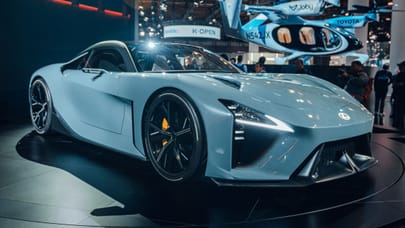
TG's guide to concepts: the Audi Project Rosemeyer
Audi's 8.0-litre, 700bhp, 217mph supercar never made production, but we wish it had


Nowadays, it’s not outrageous to imagine Audi doing a supercar concept. Not now it’s got two generations of magnificent R8 notched up (not to mention a fleet of family saloons and wagons almost capable of outrunning the flagship). Fast, exotic Audis just aren’t alien any more.
Bear that in mind as you imagine just how bonkers the Audi Rosemeyer would’ve seemed in the year 2000. The retro-futuristic Auto Union racer still looks a bit crackers in 2016. A gleaming, polished aluminium wonder with a claimed speed north of 217mph. It’s literally a shining example of the brilliant lunacy of design studies.
Advertisement - Page continues below
The bulbous, art-deco styling apes the look of Germany’s prewar Auto Union racing cars, with the rounded wheelhouses covering what were once exposed, open-wheel cross plies on the old-timers. And that upright grille and slightly mournful expression are straight off the 1930s Type 52 low-drag prototype – a shrink-wrapped machine born out of the streamlined age as man first began exploring the dark art of aerodynamics.

In 2000, no-one had heard of a Bugatti Veyron. Ferdinand Piech had not yet unleashed a crack team of engineers upon physics and space-time to create the world’s fastest street car. So, Audi’s idea of putting a W16 engine in the back of the Rosemeyer (named after prewar racing driver Bernd Rosemeyer) would’ve seemed that much more other-worldly.
Advertisement - Page continues below
Audi claimed the 8.0-litre monster developed 700bhp and 561lb ft, which would’ve pushed the Rosemeyer well past the double-ton, if Ingolstadt’s calculations were accurate. They’re premium German calculations, so let’s give them the benefit of the doubt. 700bhp in something designed to ape a low-drag prototype sounds about right.

Inside, the Rosemeyer seems dated to the point of quaintness. Yes, that’s a six-speed open-gated manual gearbox. No dual-clutch S-tronics in those days, thank you very much. Besides the manual lever to send power to all four driven wheels, it’s such a minimalist cabin. So very clean and unpretentious. There’s a four-spoke steering wheel to ogle, and a smattering of dials, but that’s your lot. And check out the diamond pattern stitching. Optional across the entire Audi range, these days...

Of course, the Rosemeyer was never destined to be turned into anything showroom ready. But it did do two very important jobs. Firstly, it established Audi as a maker of automotive sculptures, just as it was heading into a properly hot period of design, with the contemporary A4, A8 and TT still looking absolutely fresh today. Meanwhile, we got a taste of the Volkswagen Group’s supercar engineering might. A theme that would end up defining the supercar for the next decade and beyond.
Trending this week
- Car Review
BMW iX3







